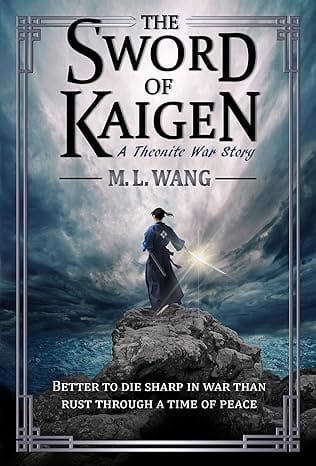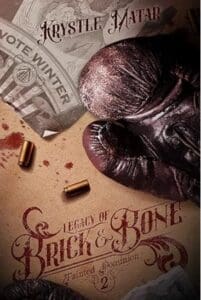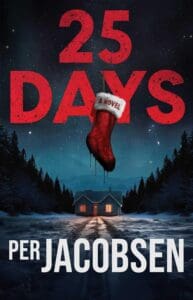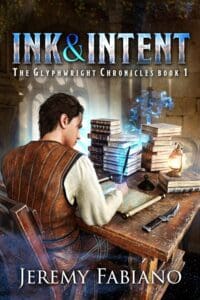
Synopsis:
On a mountainside at the edge of the Kaigenese Empire live the most powerful warriors in the world, superhumans capable of raising the sea and wielding blades of ice. For hundreds of years, the fighters of the Kusanagi Peninsula have held the Empire’s enemies at bay, earning their frozen spit of land the name ‘The Sword of Kaigen.’ Born into Kusanagi’s legendary Matsuda family, fourteen-year-old Mamoru has always known his purpose: to master his family’s fighting techniques and defend his homeland. But when an outsider arrives and pulls back the curtain on Kaigen’s alleged age of peace, Mamoru realizes that he might not have much time to become the fighter he was bred to be. Worse, the empire he was bred to defend may stand on a foundation of lies.
Misaki told herself that she left the passions of her youth behind when she married into the Matsuda house. Determined to be a good housewife and mother, she hid away her sword, along with everything from her days as a fighter in a faraway country. But with her growing son asking questions about the outside world, the threat of an impending invasion looming across the sea, and her frigid husband grating on her nerves, Misaki finds the fighter in her clawing its way back to the surface.
When the winds of war reach their peninsula, will the Matsuda family have the strength to defend their empire? Or will they tear each other apart before the true enemies even reach their shores?
Review:
This is a good book and well worth the read, but it requires some patience to get through the first part (more on that later.) There are some memorable characters—some I liked, some I didn’t—and the worldbuilding was fascinating.
There are two main characters featured in the story; Mamoru, a 14-year-old born to a powerful warrior house, and Misaki, his mother, who harbors a lot of secrets. Mamoru was inquisitive, and like many young teens, wanted nothing more than to live up to everyone else’s expectations—his father’s especially (I’ll discuss his father in a bit.) Of the two main characters, I liked him the best. He had a kind heart, looked after his brothers, and was generally a likeable character.
Misaki was…interesting. I didn’t dislike her, but I didn’t love her either. She had an interesting back story filled with crime-fighting prior to her marriage, but she wasn’t a happy person. I didn’t relate to her well, but I did empathize with her situation. Her marriage was arranged, and her husband’s family was very traditional. Women did not do certain things, and she gave up so much of who she was that it was heartbreaking. Her personality was difficult for me to connect with for most of the book, but once she finally started to take control of her life, I liked her a lot more.
There were some memorable side characters too. Some, like Mamoru’s friend Kwang Chul-hee, and his aunt Setsuko, were likeable. Others, like his father, Takeru were not. While Takeru wasn’t the ultimate evil in this story, he was one of the most frustrating characters I’ve read about in a long time. Between the way he treated his family (which was with cold indifference most of the time, or outright anger if they questioned him), his entire lack of empathy toward everyone, and his unquestioning loyalty to the Empire, I really wanted to see him gone. He was so damned aggravating… But he served his role within the story really well.
Both Misaki and Takeru evolved throughout the story—though it took a massive tragedy before either of them were prompted to even attempt change. The last few chapters were probably some of my favorites, even though it was well after the action was finished. They were both so much better at the end of the book than they were for the first 70%.
The worldbuilding had some interesting elements in it. The book is set in a small mountain town in the Kaigenese Empire. The town is governed by a mayor in conjunction with the leader of the local warrior house—in this case, the Matsuda family. The warrior houses of Kaigen all possess a force called jiya, and depending on the family involved, the jiya takes on a specific form. The Matsudas are wielders of water and ice, and the strongest of the line can summon a whispering blade—an ice construct akin to their steel katanas, but so sharp it can cleave through anything.
Misaki’s family have powers over blood, an ability that can be used to heal, but is also feared. The elite fighters from the country of Yamma wield fire, and the dangerous Ranganese—ultimately the enemy of the Empire and its allies—wield wind. There is quite a lot of lore introduced about each type of ability, the gods/goddesses they’re associated with, and the history of the various countries.
And through all of this, there is the hint of a massive conspiracy. Even at the 70% mark, I only had a vague notion of what exactly was going on. I loved that element of the unknown and the ominous quality it leant to the story.
But back to the first part of the book that I mentioned earlier. It starts off incredibly slow, to the point I almost decided to give up. If you’ve followed me or my reviews for any length of time, you know I rarely DNF and it takes a lot for me to even consider it. But this one was a nearly, and not only due to its crawling pace at the start.
I’m usually not too picky about “info dumping” in books, but I struggled with a few early parts in this one. There were some history lessons that not only included huge chunks of information about the world and its past, but dates as well. I am not a numbers person. I do not retain them well. The history lessons were not fun for a reader like me. (I’d much prefer this type of content in timeline format at the back of the book, especially since it wasn’t even relevant to the rest of the story.)
What kept me going through the first section was that the world was interesting and the book is very well-written. It felt immersive, despite the initial slow pace, and I think my favorite parts of the book were the combat scenes. They meshed physical combat with jiya work so seamlessly, it was almost cinematic—and really damned cool.
If you can get past the book’s slow start, to where the story really begins to take shape, it’s a fascinating read with some pretty memorable characters.









Leave a Reply